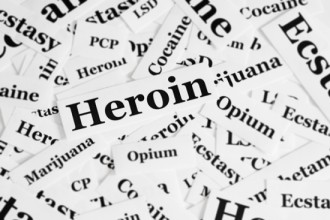Heroin is the substance that responds best to the term "drug" because it suppresses the Central Nervous System. It is a semi-synthetic derivative of morphine, which in turn is one of the opiate (alkaloids).
Heroin has analgesic action and causes physical and mental dependence. It is taken intravenously, is inhaled or smoked, and it lasts from one hour to one day depending on the dose, the mode of delivery, the body weight, the sex and the brain characteristics of the user.
After a relatively short period of time, the user gains tolerance, i.e. he has to take more and more doses to achieve the same result. Once the body has become accustomed to heroin, its interruption is accompanied by intense reactions. This is the so-called withdrawal syndrome.
 The body withdrawal syndrome
The body withdrawal syndrome
The body withdrawal syndrome evolves in two phases:
- First phase: it is explosive, lasting a few days
- Second phase: it is long-lasting; it lasts until the body restores endogenous production of opioids and adjusts its functions to new data.
The symptoms
- 8-12 hours: sweating, trembling, anxiety, intense insomnia.
- 12-24 hours: mydriasis, shiver and flushing, muscle spasms, muscle and joint pain.
- 24-36 hours: stress, vomiting, diarrhea, blood pressure increase, breathing frequency increase, body temperature increase.
- 36-48 hours: maximum volume.
- 7-10 days: Full restoration of autonomous functions
The intensity of the Body Syndrome depends on the amount of the daily dose of the addict. It starts a few hours after the last use; it culminates in the next two days and is gradually withdrawn after 7-10 days.
For some people, it is safe to treat withdrawal syndrome outside institutions while others may need hospital care.

